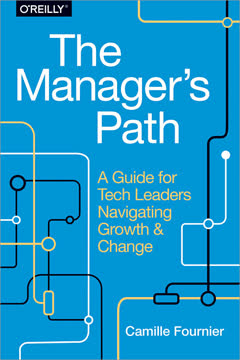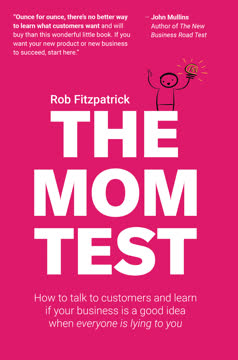Points clés
1. La technologie numérique est biaisée vers des comportements et des résultats spécifiques
Les technologies numériques sont biaisées vers le choix, car tout doit être exprimé en termes d'un langage symbolique discret, oui ou non.
Biais inhérents. La technologie numérique n'est pas neutre ; elle comporte des tendances intégrées qui façonnent nos interactions et nos décisions. Ces biais incluent la préférence pour le choix, l'immédiateté et l'abstraction. Comprendre ces biais nous permet d'utiliser les outils numériques de manière plus consciente et efficace.
Impacts sur la société. Les biais de la technologie numérique ont des conséquences considérables sur notre manière de communiquer, de travailler et de penser. Par exemple, le biais vers le choix peut mener à la fatigue décisionnelle, tandis que le biais vers l'immédiateté peut éroder notre capacité à penser profondément et de manière réfléchie. En reconnaissant ces tendances, nous pouvons développer des stratégies pour contrer leurs effets négatifs et exploiter leur potentiel positif.
2. Comprendre et naviguer dans la nature "toujours connectée" de la vie numérique
Au lieu de devenir autonomes et conscients, nous devenons épuisés et stressés.
Connectivité constante. L'ère numérique a inauguré une époque de connexion perpétuelle, où l'on s'attend à ce que nous soyons disponibles et réactifs en tout temps. Cette mentalité de "toujours connecté" peut entraîner du stress, de l'épuisement et une capacité diminuée à se concentrer sur des tâches importantes.
Reprendre le contrôle. Pour combattre les effets négatifs de la connectivité constante, nous devons :
- Définir des limites pour l'utilisation des appareils
- Créer des moments désignés "hors ligne"
- Pratiquer un engagement conscient avec la technologie
- Prioriser les interactions en face à face
- Développer des stratégies pour un travail en profondeur et une attention focalisée
En prenant le contrôle de nos habitudes numériques, nous pouvons tirer parti des avantages de la connectivité tout en évitant ses pièges.
3. Équilibrer les connexions virtuelles avec les interactions réelles
Le domaine numérique est biaisé contre le local et en faveur de la délocalisation.
Présence virtuelle vs. physique. La technologie numérique a élargi notre capacité à nous connecter avec des personnes à travers de vastes distances, mais elle a également conduit à une dévalorisation des interactions locales en face à face. Ce changement peut entraîner un sentiment de déconnexion de notre environnement immédiat et de nos communautés.
Trouver un équilibre. Pour maintenir des relations saines et un fort sentiment d'appartenance :
- Prioriser les interactions en personne lorsque c'est possible
- Utiliser les outils numériques pour améliorer, et non remplacer, les connexions locales
- Participer à des activités et événements communautaires
- Pratiquer la pleine conscience et la présence dans les espaces physiques
- Reconnaître la valeur unique des expériences incarnées
En équilibrant consciemment nos interactions virtuelles et physiques, nous pouvons tirer parti des avantages de la connectivité numérique tout en préservant la richesse des expériences locales et incarnées.
4. Reconnaître la simplification excessive des questions complexes dans les espaces numériques
Le domaine numérique est biaisé vers une réduction de la complexité.
Tendances réductionnistes. Les plateformes numériques encouragent souvent la simplification des sujets nuancés en choix binaires ou en slogans. Cela peut mener à la polarisation, à l'incompréhension et à une perte de contexte dans les discussions importantes.
Embrasser la complexité. Pour contrer ce biais :
- Rechercher des perspectives diverses et des contenus longs
- Pratiquer la pensée critique et la vérification des faits
- S'engager dans des discussions réfléchies et nuancées en ligne et hors ligne
- Reconnaître les limites des représentations numériques des questions complexes
- Encourager et participer à des approches interdisciplinaires pour résoudre les problèmes
En embrassant activement la complexité, nous pouvons favoriser des dialogues plus significatifs et développer des solutions plus complètes aux défis sociétaux.
5. Maintenir votre identité et votre responsabilité dans les environnements en ligne
Soyez vous-même.
Anonymat numérique. Internet permet souvent des interactions anonymes ou pseudonymes, ce qui peut entraîner une déconnexion entre nos identités en ligne et hors ligne. Cela peut entraîner une diminution de la responsabilité et une tendance à des comportements plus extrêmes ou nuisibles.
Présence en ligne authentique. Pour cultiver une présence numérique responsable et authentique :
- Utiliser votre vrai nom lorsque c'est approprié
- Assumer la responsabilité de vos actions et paroles en ligne
- Développer une persona en ligne cohérente avec votre moi hors ligne
- Reconnaître la permanence des communications numériques
- Favoriser l'empathie et la compréhension dans les interactions en ligne
En maintenant notre identité et notre responsabilité en ligne, nous pouvons créer un environnement numérique plus honnête, respectueux et constructif.
6. Embrasser le pouvoir de l'ouverture tout en respectant la propriété intellectuelle
Partagez, ne volez pas.
Collaboration ouverte. L'ère numérique a permis des niveaux de partage et de collaboration sans précédent, menant à des innovations dans les logiciels open-source, les licences Creative Commons et les plateformes de connaissance collaborative comme Wikipédia.
Équilibrer ouverture et propriété. Pour naviguer dans ce nouveau paysage :
- Comprendre et respecter les différents types de droits de propriété intellectuelle
- Utiliser les ressources open-source et Creative Commons de manière appropriée
- Contribuer à des projets collaboratifs lorsque c'est possible
- Attribuer et créditer correctement le travail des autres
- Soutenir les créateurs par une consommation éthique et une compensation équitable
En embrassant l'ouverture tout en respectant la propriété intellectuelle, nous pouvons favoriser une culture d'innovation et de créativité qui profite à tous.
7. Apprendre à programmer ou risquer d'être programmé
Si nous n'apprenons pas à programmer, nous risquons d'être programmés nous-mêmes.
Littératie numérique. Dans un monde de plus en plus numérique, comprendre comment fonctionne la technologie est crucial pour maintenir notre autonomie et prendre des décisions éclairées. Les compétences en programmation deviennent aussi fondamentales que la lecture et l'écriture.
Autonomisation par le code. Pour prospérer à l'ère numérique :
- Apprendre les concepts et langages de programmation de base
- Comprendre la logique derrière les algorithmes et les structures de données
- Explorer les implications éthiques de la technologie
- Plaider pour l'éducation en informatique dans les écoles
- Encourager la pensée critique sur le rôle de la technologie dans la société
En développant des compétences en programmation et en littératie numérique, nous pouvons activement façonner le paysage technologique plutôt que d'en être des consommateurs passifs.
Dernière mise à jour:
FAQ
What's "Program or Be Programmed: Ten Commands for a Digital Age" about?
- Digital Age Challenges: The book explores the challenges and opportunities presented by the digital age, emphasizing the importance of understanding and engaging with digital technologies.
- Ten Commands: It provides ten "commands" or guidelines to help individuals navigate the digital landscape effectively and responsibly.
- Programming vs. Being Programmed: The central theme is the choice between programming digital tools or being passively programmed by them, highlighting the need for active participation in digital culture.
- Cultural and Social Impact: Rushkoff discusses the broader cultural and social implications of digital technologies, urging readers to consider their roles in shaping the future.
Why should I read "Program or Be Programmed"?
- Understanding Digital Biases: The book helps readers understand the inherent biases of digital technologies and how they influence human behavior and society.
- Empowerment through Knowledge: By learning about programming and digital literacy, readers can gain more control over their interactions with technology.
- Cultural Insight: Rushkoff provides insights into how digital technologies are reshaping culture, communication, and personal identity.
- Practical Guidance: The ten commands offer practical advice for living and working in a digital world, making it a valuable resource for anyone navigating modern technology.
What are the key takeaways of "Program or Be Programmed"?
- Be Conscious of Time: Digital technologies can disrupt our sense of time; it's important to manage how and when we engage with them.
- Value Real-World Interactions: Despite the convenience of digital communication, in-person interactions remain crucial for genuine connection.
- Embrace Complexity: Digital tools often oversimplify complex issues; it's vital to recognize and address this reduction.
- Learn to Program: Understanding programming is essential to avoid being passively controlled by technology and to actively shape digital experiences.
How does Douglas Rushkoff define "programming" in the book?
- Beyond Coding: Programming is not just about writing code; it's about understanding how digital systems work and influence us.
- Empowerment Tool: It is a means of gaining control over technology, allowing individuals to shape their digital environments.
- Cultural Literacy: Programming is seen as a form of literacy necessary for participating fully in the digital age.
- Active Participation: Rushkoff emphasizes programming as a way to actively engage with and influence the digital world, rather than being a passive consumer.
What are the "Ten Commands" in "Program or Be Programmed"?
- Time: Do not be always on; manage your digital engagement.
- Place: Live in person; prioritize real-world interactions.
- Choice: You may always choose none of the above; resist forced digital choices.
- Complexity: You are never completely right; embrace complexity and nuance.
- Scale: One size does not fit all; recognize the limits of digital scalability.
- Identity: Be yourself; maintain authenticity online.
- Social: Do not sell your friends; value genuine connections over commercial interests.
- Fact: Tell the truth; prioritize factual communication.
- Openness: Share, don’t steal; respect intellectual property and collaboration.
- Purpose: Program or be programmed; learn to code and understand digital systems.
What does Rushkoff mean by "Program or Be Programmed"?
- Choice of Agency: The phrase emphasizes the choice between actively shaping digital tools or being passively shaped by them.
- Control Over Technology: It highlights the importance of understanding and controlling the technologies we use.
- Cultural Influence: The concept underscores the role of programming in influencing culture and society.
- Empowerment Message: Rushkoff encourages readers to learn programming to gain empowerment and agency in the digital age.
How does "Program or Be Programmed" address the concept of digital identity?
- Anonymity vs. Authenticity: Rushkoff discusses the tension between anonymity and authenticity in digital interactions.
- Accountability: He emphasizes the importance of being accountable for one's words and actions online.
- Identity as Liability: The book explores how digital identity can be a liability, especially when anonymity leads to depersonalized behavior.
- Encouragement to Be Real: Rushkoff encourages readers to maintain their real identities online to foster genuine connections and accountability.
What are the implications of digital technology's bias toward choice, according to Rushkoff?
- Forced Decisions: Digital systems often force users to make choices, even when unnecessary, due to their binary nature.
- Illusion of Freedom: The abundance of choices can create an illusion of freedom while actually limiting true autonomy.
- Consumer Manipulation: Marketers exploit this bias to influence consumer behavior and preferences.
- Resisting Categorization: Rushkoff advises readers to resist unnecessary categorization and embrace the option of choosing none of the above.
How does Rushkoff suggest we handle the complexity of digital information?
- Recognize Oversimplification: Digital tools often oversimplify complex issues, leading to polarized views and misunderstandings.
- Value Context: It's important to seek context and understand the broader picture rather than relying solely on digital summaries.
- Embrace Nuance: Rushkoff encourages embracing complexity and nuance in digital interactions and decision-making.
- Avoid Binary Thinking: He warns against the reductionist nature of digital systems that promote binary thinking and choices.
What does Rushkoff say about the social nature of digital media?
- Inherent Social Bias: Digital media is inherently social, designed to connect people rather than isolate them.
- Monetization Risks: Attempts to monetize social interactions can compromise the integrity of digital networks.
- Value Genuine Connections: Rushkoff emphasizes the importance of valuing genuine human connections over commercial interests.
- Evolutionary Imperative: He suggests that the drive for social connection is an evolutionary imperative, pushing us toward greater collaboration.
What are some of the best quotes from "Program or Be Programmed" and what do they mean?
- "Program, or be programmed." This encapsulates the book's central message about the importance of understanding and engaging with digital technologies.
- "The content is not the message, the contact is." Rushkoff highlights the value of human connection over the content itself in digital interactions.
- "Tell the truth." This command underscores the digital age's bias toward factual communication and the importance of honesty.
- "Be yourself." Rushkoff encourages authenticity and accountability in digital spaces, warning against the depersonalization of online interactions.
How does "Program or Be Programmed" address the issue of digital openness and sharing?
- Bias Toward Sharing: Digital networks are inherently biased toward openness and sharing, reflecting their collaborative origins.
- Distinguishing Sharing from Stealing: Rushkoff emphasizes the importance of understanding the difference between sharing and exploiting others' work.
- Cultural Shift: The book discusses the cultural shift toward openness and the challenges it presents in terms of intellectual property.
- Promoting Ethical Sharing: Rushkoff advocates for ethical sharing practices that respect creators' rights while embracing digital collaboration.
Avis
Programmez ou Soyez Programmés reçoit des avis mitigés. Certains louent son analyse perspicace de l'impact de la technologie numérique sur la société et ses conseils pratiques pour naviguer dans l'ère numérique. D'autres le trouvent répétitif, évident ou manquant de substance. Beaucoup apprécient l'examen par Rushkoff des biais technologiques et son appel à la littératie numérique, y compris les compétences en programmation. Les critiques soutiennent que certaines analogies sont imparfaites et que les solutions proposées sont insuffisantes. Dans l'ensemble, les lecteurs valorisent les idées stimulantes du livre sur notre relation avec la technologie, même s'ils ne sont pas d'accord avec tous les arguments de Rushkoff.
Similar Books
















